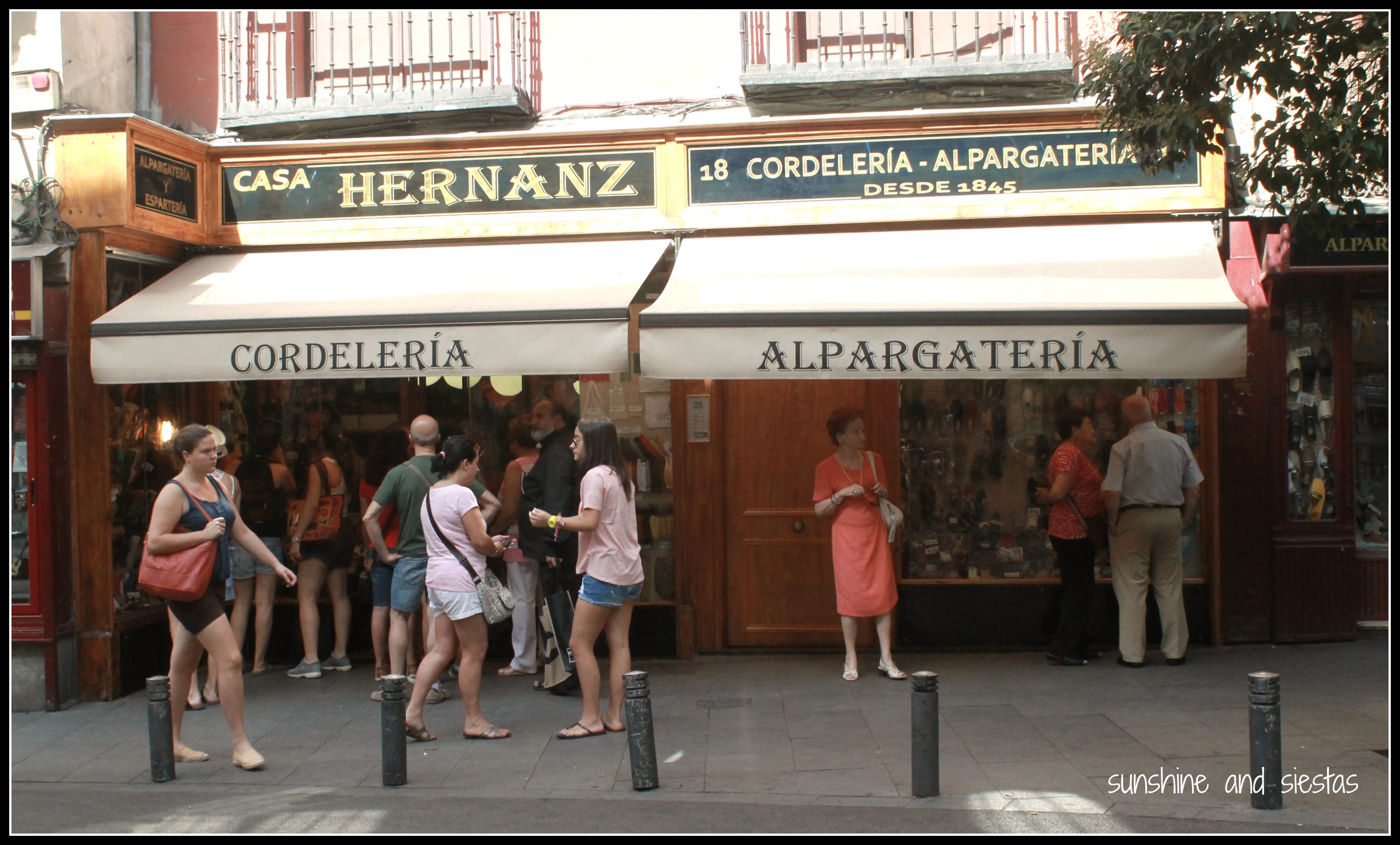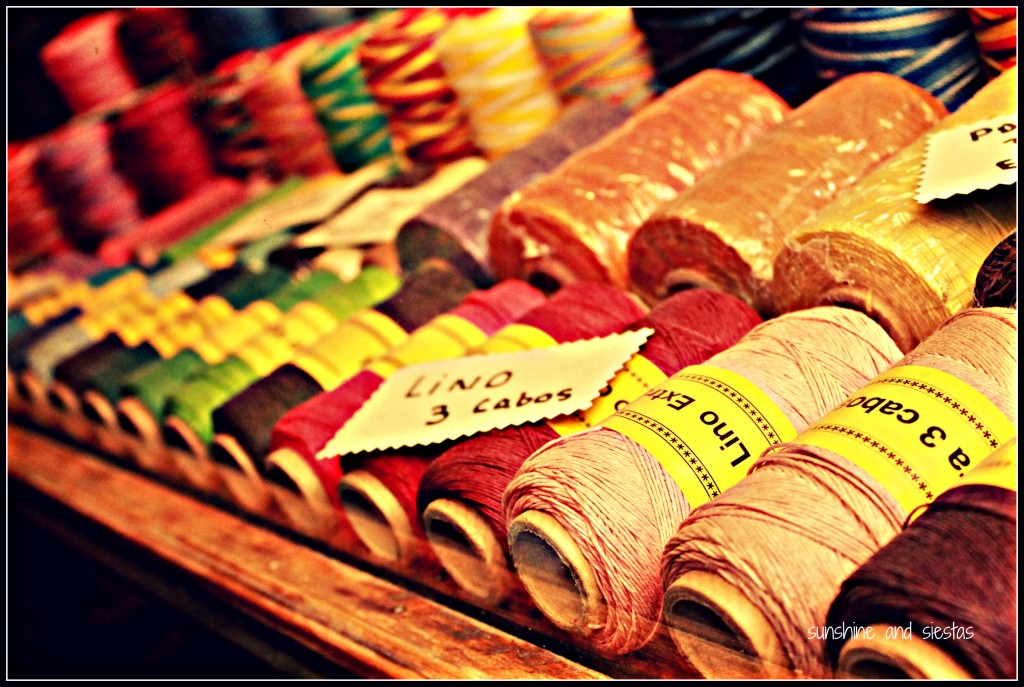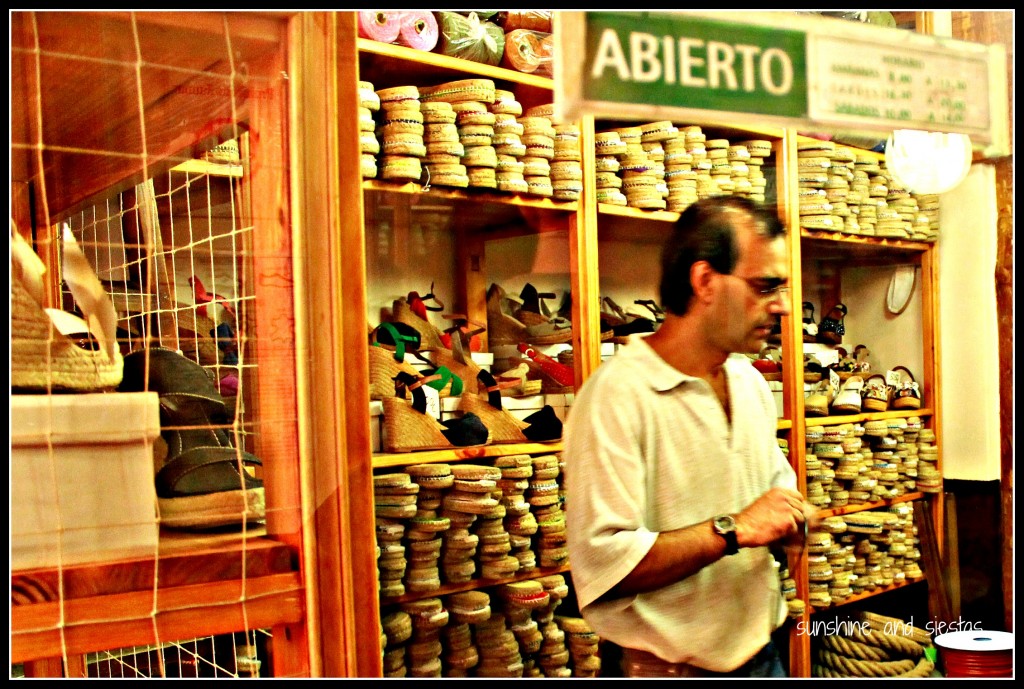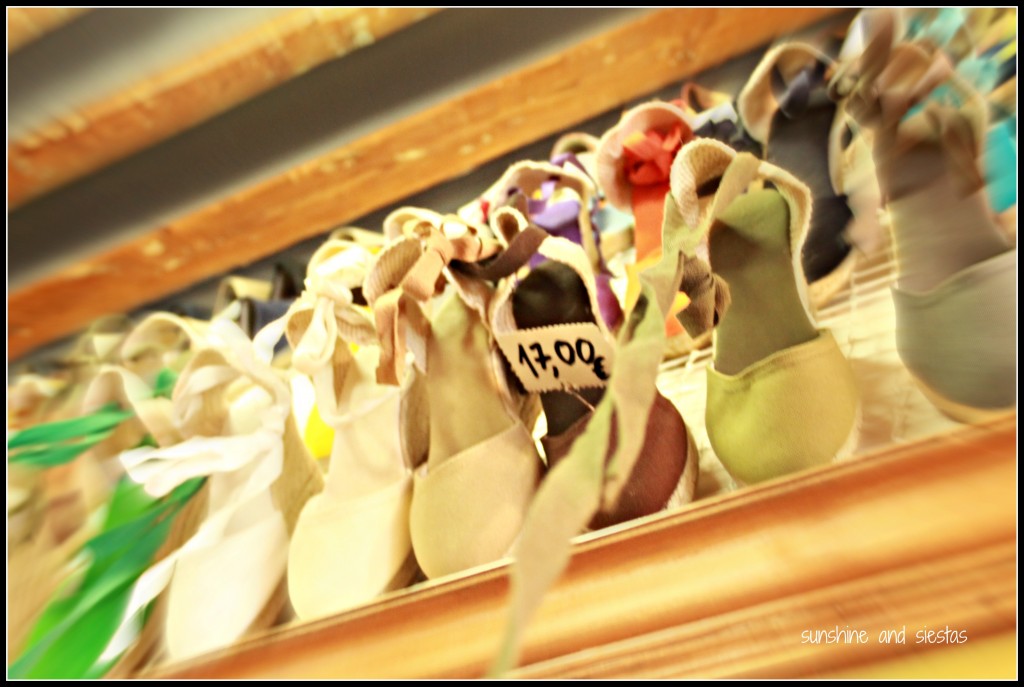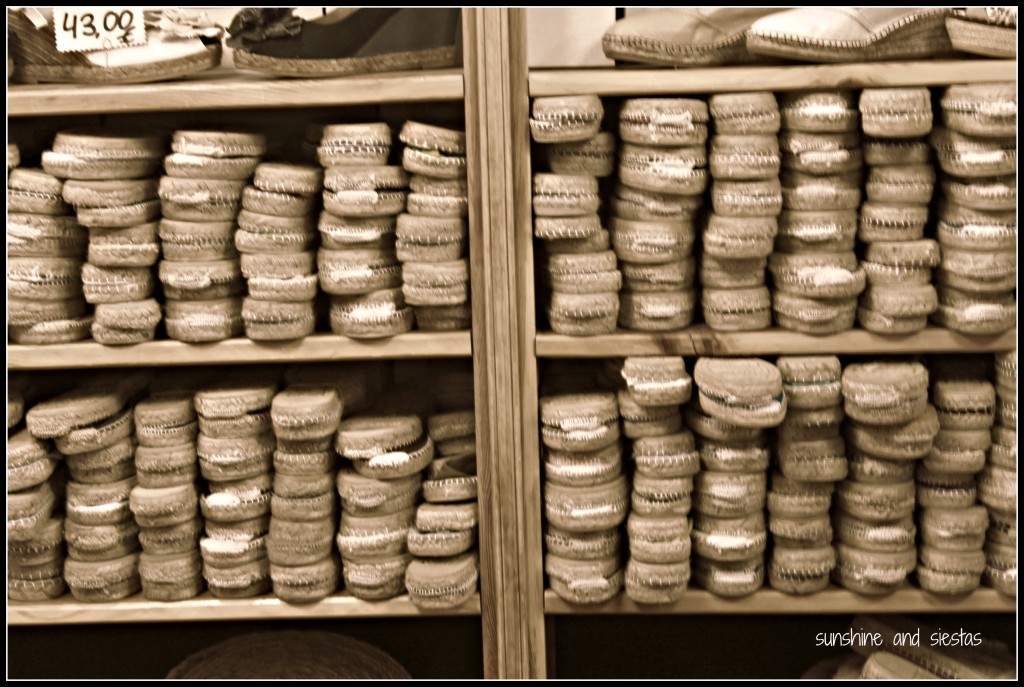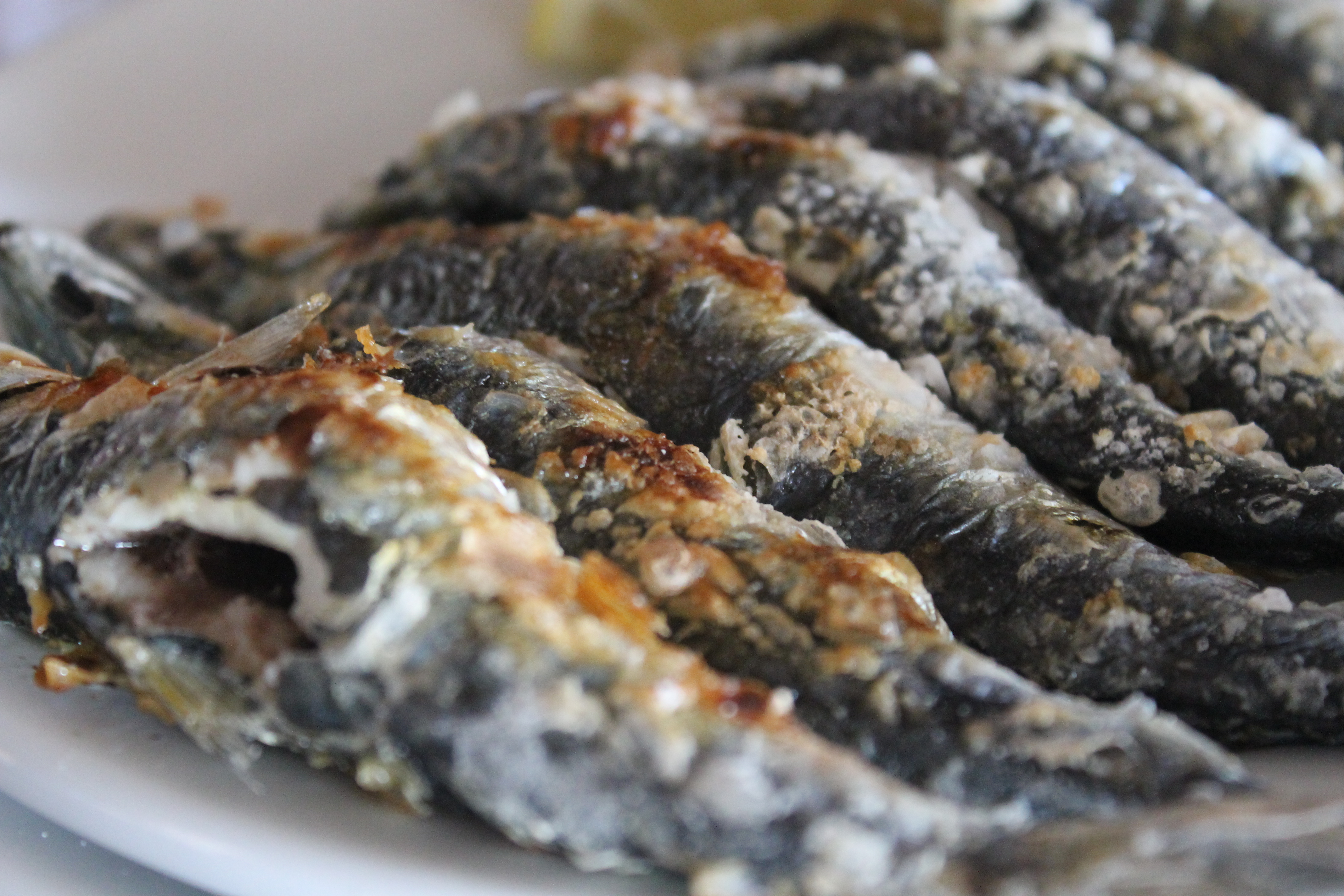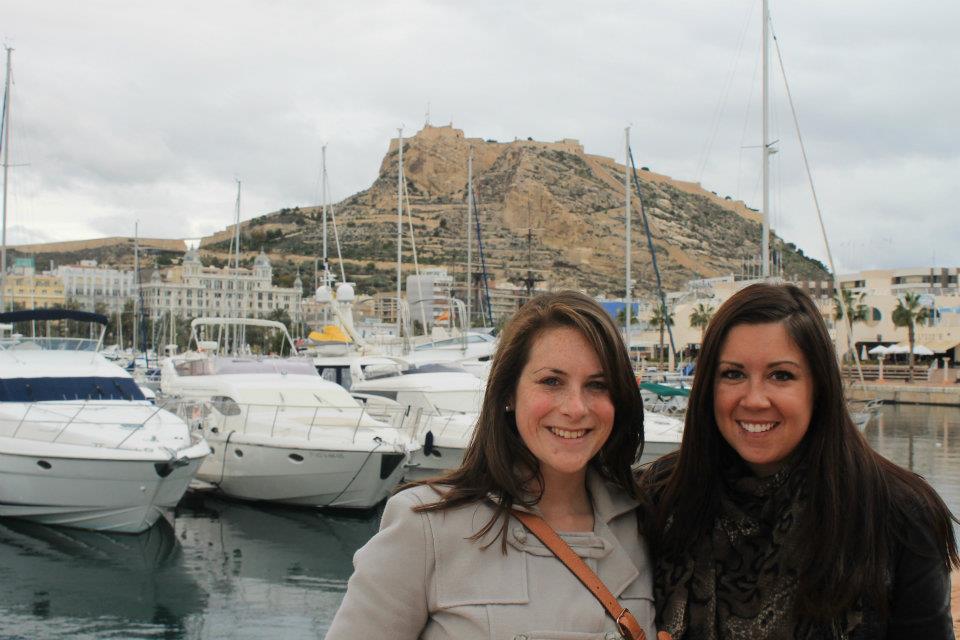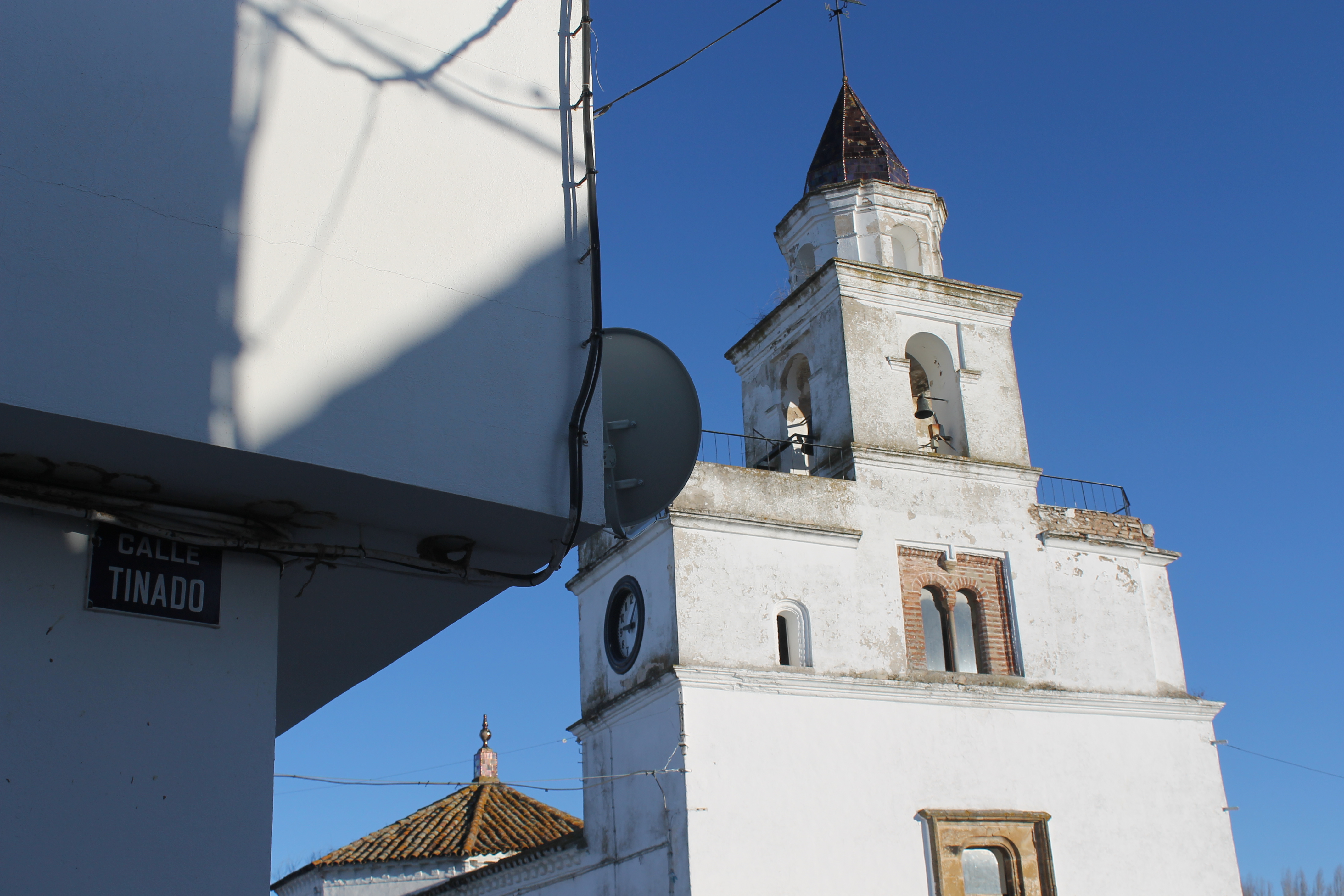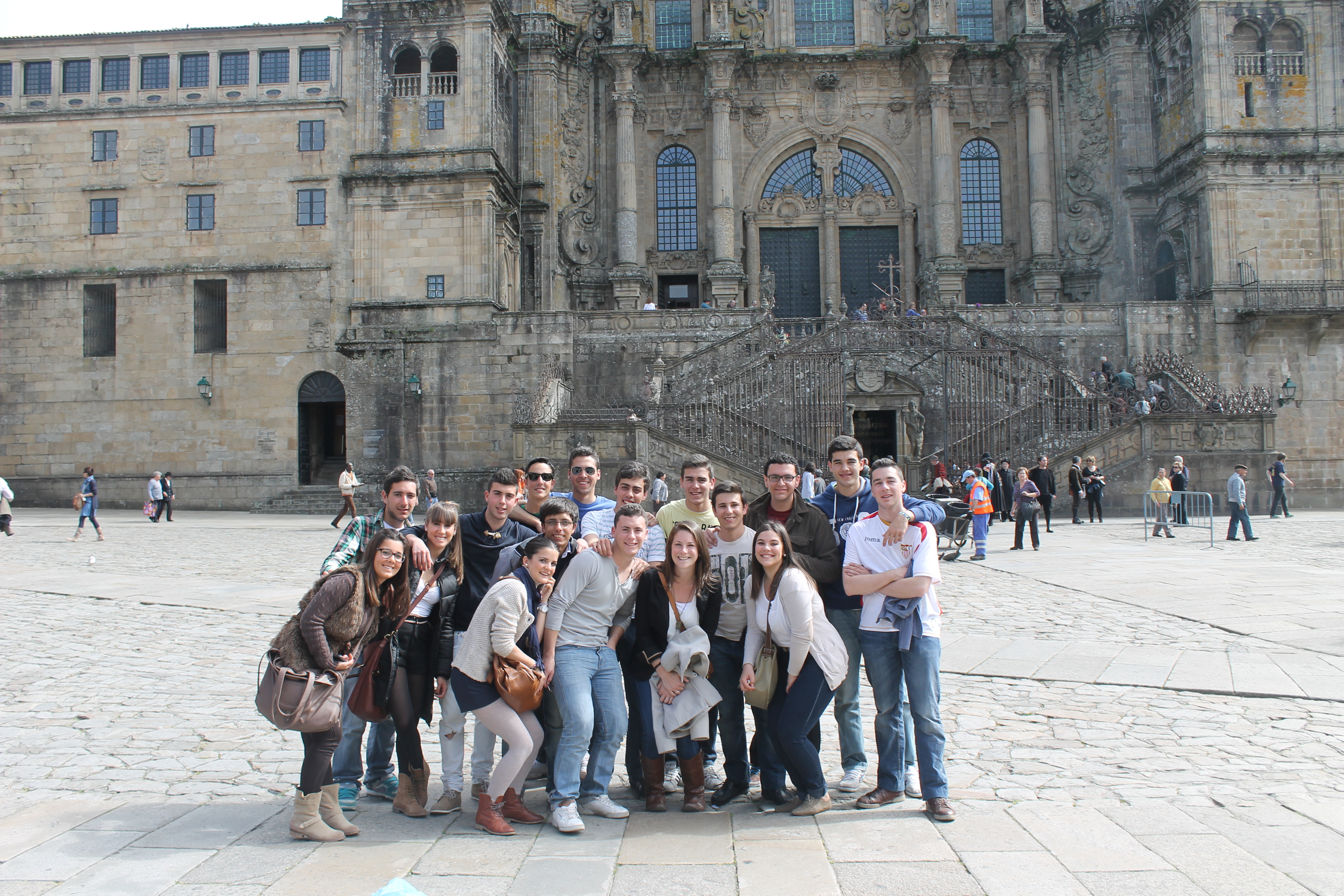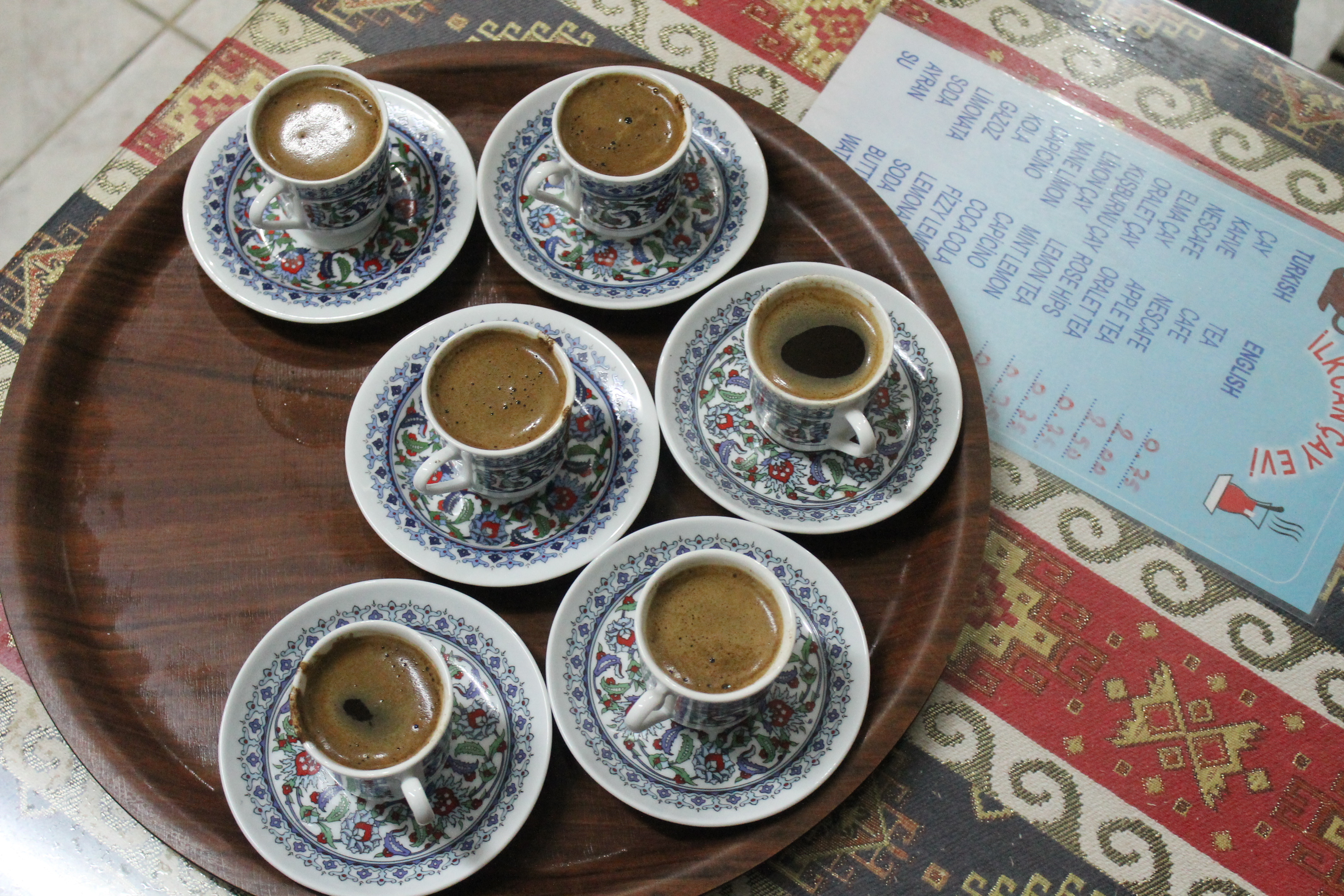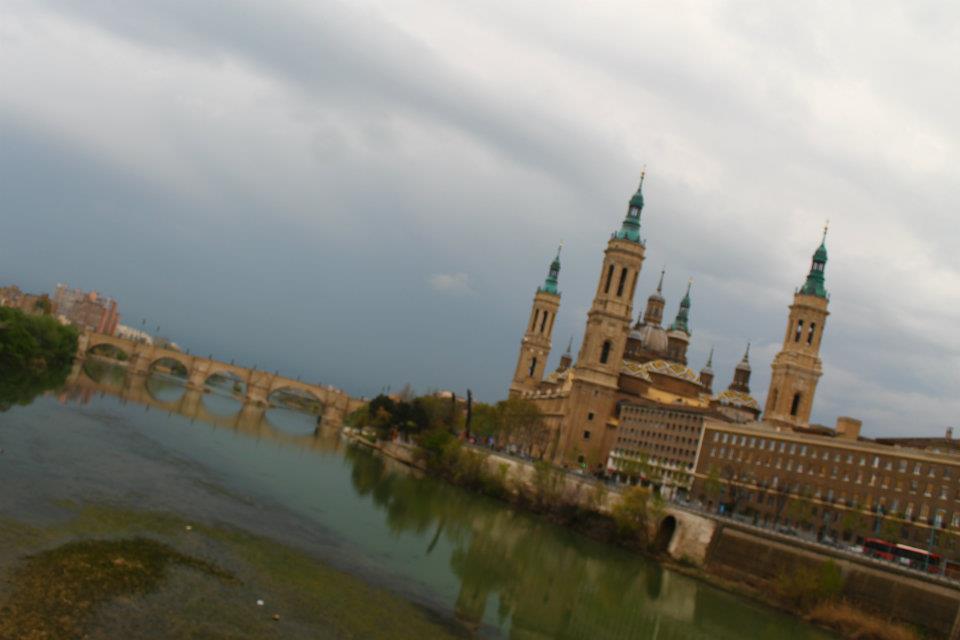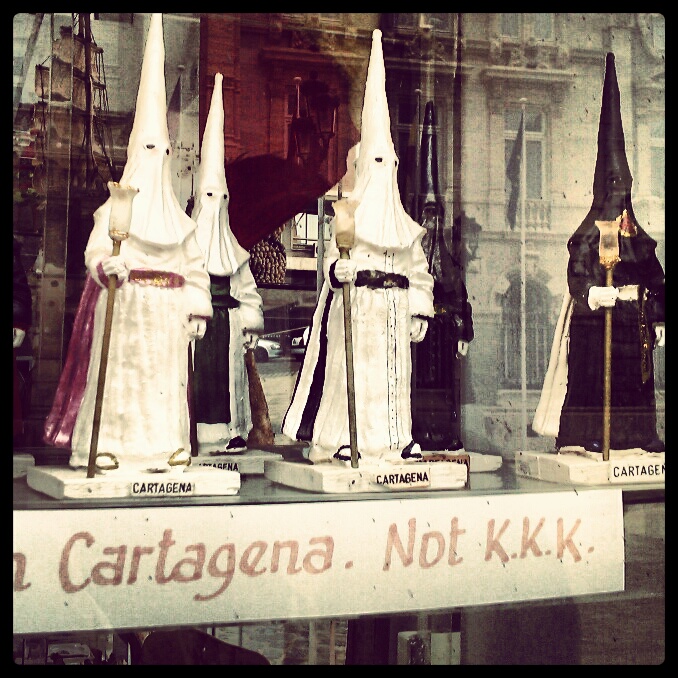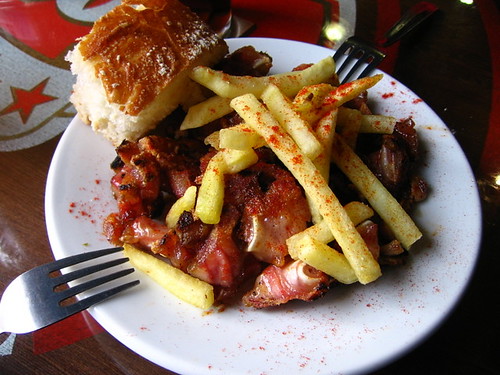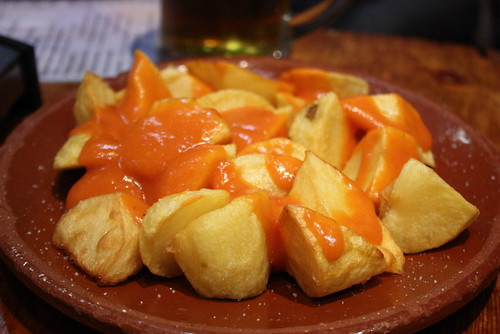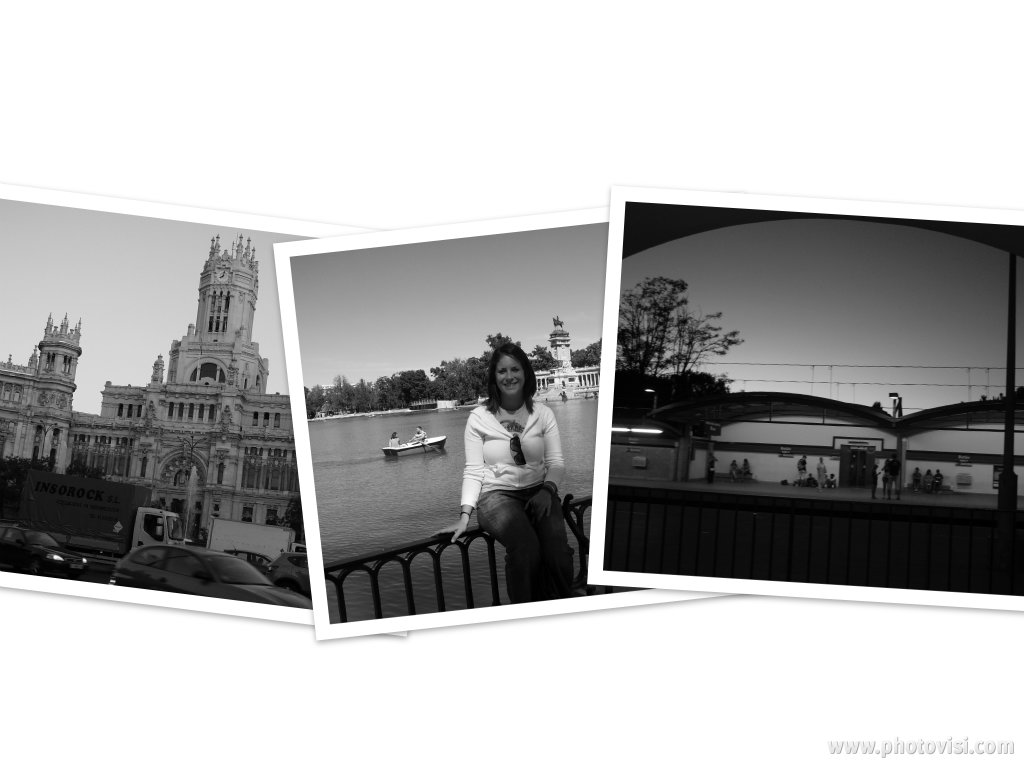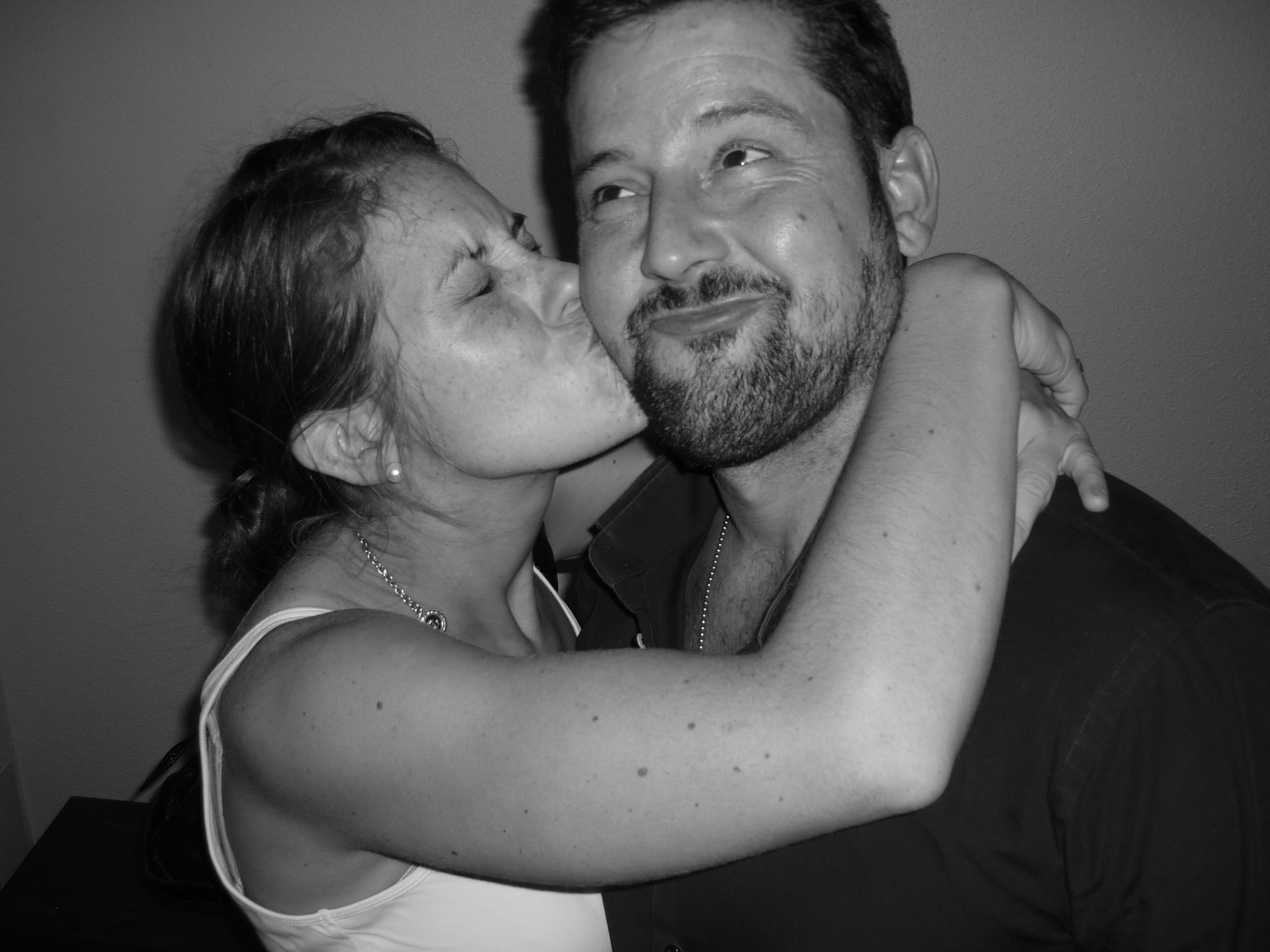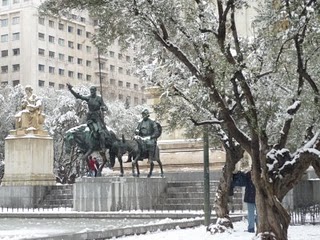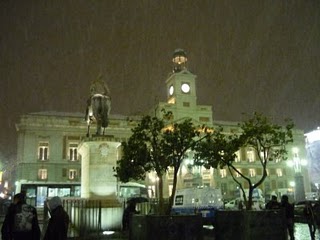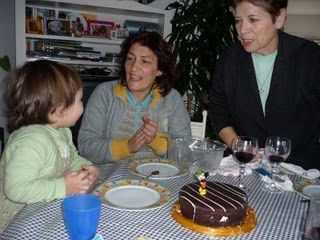Calle de Toledo stretches from Madrid’s crowning Plaza Mayor all the way down a hill past La Latina’s churches and bars to the Glorieta de Toledo, where I first spent the night a weekend in Madrid. Alvaro and I hiked up and down that weekend as he took me to his favorite places for a caña–tapa.
I’ve spent countless days around the Plaza Mayor, snacking on bocadillos de calamares, browsing souvenir shops. In the quest to spend a few hours before the Novio came to meet me in Madrid, I climbed up Calle de Toledo, on my way to Mercado San Anton in Chueca. Remembering an article about shopping in Madrid, I was delighted to stumble across a Madrid institution, Casa Hernánz.
Wedged into a small workshop space just a block of Plaza Mayor, I peered in the windows showcasing the dozens of raffia-soled shoes, a popular folk style called espadrilles or alpargatas. Standing on my toes, I found a pair of beige ankle-strap sandals with a broad pink strap across the toes.
“You should take a picture to show at the mostrador,” the black-clad woman behind me said to her daughter. “This line is so long, you won’t even remember the style you want by the time you’re attended to. My company in line were two Americans with suitcases, a Crocs-wearing priest and an endless array of older madrileñas. I sighed and pulled out my smartphone, settling in for what was sure to be as long a wait as the bank.
The line inched along. To pass the time, I looked into the display windows immediately next to door which were lined with a rainbow of linos, the thin thread that used for the superior part of the shoe. The soles are made of esparto, a coarse, vegetable thread that is woven together and glued onto another thin rubber sole. The lino is then hand-sewn onto the sole, called the plantilla. This type of shoe is typical in many regional costumes, come in colors as diverse as salmon or turquoise, and are often made with ribbons that lace up the calf. I myself swear by them during the Feria, as they keep my feet cool during the long nights of dancing.
As I inched closer to the shop doors, the woman behind me tried sneaking in to sit on a long wooden bench opposite the counter, which stretched from one end of the workshop to the other. The priest put up his hand, a look of anger on his face. “Senora, I’ve been waiting in line all morning. Do. Not. Pass.”
She shrunk away, probably clutching a rosary, and cursed the priest. I couldn’t help but laugh. Now that I was within the door, straddling the hot street and the even hotter workshop, I was surrounded by shoes, fabrics and the plantillas, stuffed into bookshelves behind the counter. Some were bare, while others, separated according to size, already had the fabric attached. Shoes climbed up the wall, from finger-length baby sizes and on up. Even more styles than I’d seen outside were showcased in wire cases, and miles of different types of rope snaked across the counter. An old fashioned phone called in special orders por encargo and a woman attended to them, scribbling notes and measuring soles for whoever was on the other end of the line.
The priest was there for new alpargatas in a simple black style (good, throw those Crocs away, Padre!) and a white twisting cord for his robe. The two Americans opted for simple lace-up styles in royal blue, and I suddenly had Rosary Lady pushing me to the end of the counter.
The lady on the other side of the mostrador smirked at me. “Que querías?” I fumbled for the words, wishing I had snapped a shot of the sandals I’d been eyeing. I pointed to the baby shoes just behind me. “Um, my friend has a baby. He’s small. I want some of the shoes for him,” I managed.
“Well, how big is he? How old?” I can barely remember my own shoe size in Spanish, let alone Baby Jack’s, who I had never met. I got him Cubby Blue to make his parents happy and motioned to a white pair of strappy heels for my sister. When it came time to explain the ones I liked, she knew immediately and went to fetch them.
Phew.
In the end, my wide feet wouldn’t make it into the shoe, and I knew I couldn’t cram anything more into my bag. Between my sister’s tacones and little Jack’s shoes, I paid a mere 34€ – far less than the priest and his miles of cordón!
Casa Hernanz is located on Calle de Toledo, numbers 18-20, nestled just next to the sprawling Plaza Mayor. Hours are 9:00am -1:30pm and 4:30 – 8:00pm Monday through Friday, and Saturdays 10am – 2:00pm. Lines can get long, so be sure to arrive early. Products and services can be consulted on Casa Hernanz’s website.
I’m looking for ideas for two new categories for Sunshine and Siestas – Typical Espaneesh (think, the mid morning cafelito, carrito de compras or finquillo) and Places with Encanto. If you’ve got a place to suggest or are interested in guest blogging about it, leave me a message in the comments, or write me at sunshineandsiestas @ gmail . com.
